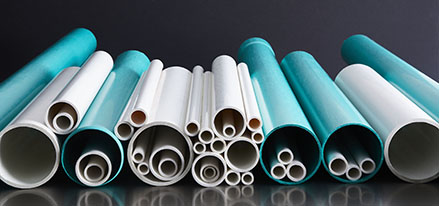Basics
Wax is a class of organic compounds that are solid at ambient temperature but melt between 40 – 90 °C (104F-194 °F). Wax is insoluble in water yet becomes soluble in organic and nonpolar solvents.
Wax can be sourced from nature ─ Mineral (Petroleum, Montan), Vegetable (Soy, Palm, Carnauba, Candelilla, Sunflower, Rice Bran), or Animal (Bees, Tallow) ─ or synthetically derived (Fischer-Tropsch, Polyethylene, Linear Alpha Olefin).
Paraffin wax is derived from petroleum and composed primarily of long chain alkanes. The majority of the paraffin wax molecules are linear alkanes, called normal paraffin. The rest of them are non-normal paraffin.
Bright stock slack wax is derived from deasphalted vacuum resid through refining process. It is the heaviest of the paraffin wax grades with higher molecular weight and has a majority of non-normal paraffin molecules. It is more amorphous in nature and has a higher melting temperature than other paraffin wax. Bright stock slack wax is the raw material of microcrystalline wax.
The typical properties of paraffin wax include melting point or congealing point, oil content, viscosity, needle penetration and color.
- Fully refined wax has less than 1% oil content. It is a hard wax with a highly crystalline structure and is often white in color.
- Scale (or semi-refined) wax has oil content typically between 1-4%. It is partially refined and has color yellow to white.
- Slack wax usually has oil content above 4%. Slack wax is softer and usually has a yellow color.
Applications
Wax is used in thousands of industry applications, including candle, adhesives, PVC lubrication, construction board, packaging, corrugated boxes, crayons, tires, etc., with emerging application areas studied and developed to meet growing wax demand. Feel free to contact us and discuss your need with our wax experts.
Below is a general guidance on wax selection for different types of candles. ExxonMobil’s Prowaxx™ FR (fully refined paraffin wax) and SR (semi-refined paraffin) waxes are widely used in candle formulation.
-
Pillar & taper candles
- Fully refined waxes
- Hard melting point [58-65°C]
- Hard wax [EM np @40°C = 30-60]
- Low oil content [<1%]
- Container candles
- Fully/semi-refined or slack wax
- Low melting point [49-54°C]
- Softer wax [EM np @40°C = 60-110]
- Moderate oil content [0-7%]
- Votives & tealights
- Semi-refined or slack wax
- Melting point [50-61°C]
- Softer wax [EM np @25°C = 30-50]
- Higher oil content [up to 10%]
Wax controls the set time of an adhesive. It is important to select a wax for the balanced set time and low temperature performance of adhesive formations. Wax also acts as the diluent in an adhesive. The low viscosity of wax makes adhesive easier to process. ExxonMobil’s high melt fully refined paraffin Prowaxx™ waxes are excellent grades for adhesive application.
Wax acts as an external lubricant which coats the metal surface of equipment during PVC processing. The chemical structure and viscosity of wax will affect its lubrication performance. Prowaxx™ FR high melt waxes are the most suitable grades as blend components for PVC lubrication.
Paraffin wax has been demonstrated to be an effective sizing agent for construction board including OSB, MDF, PB, etc. It is critical to choose a wax grade with great water resistance for board performance and low volatility for processing safety. In boardsizing application, wax can be used as neat additive or in a wax emulsion/suspension.
ExxonMobil products
Prowaxx™ is the name for the product lines of fully refined wax, slack wax, and scale (or semi-refined) wax from ExxonMobil.
- Our fully refined paraffin wax line consists of various grades with different melting point from 51°C to 73°C (125-164 °F).
- Our slack wax line consists of various grades with different congealing point from 45°C to 81°C (113-154 °F).
- Our scale (or semi-refined) wax line consists of various grades with different melting point from 52°C to 57°C (125-135 °F).
Prowaxx™ fully refined paraffin waxes meet the requirements of FDA 21 CFR178.3710 and can be safely used as a component of nonfood articles in contact with food. These waxes also carry BPI ®compostable certificate and comply with the specifications established in ASTM D6400
Prowaxx® 1254 SR meets the requirements of FDA 21 CFR178.3710 and can be safely used as a component of nonfood articles in contact with food.
Prowaxx® 1292 SR meets the requirements of RAL-GZ 041 quality mark for candle manufacture.
Our ExxonMobil Waxes website provides links to PDS and SDS of each grade, or you can search for a specific wax in the ExxonMobil PDS or SDS search.
ExxonMobil operation
ExxonMobil’s paraffin wax is produced through a series of refining processes including distillation, solvent extraction, and dewaxing. Distillation is used to separate molecules based on boiling point into streams suitable for upgrading to wax. Solvent extraction removes aromatics and polar molecules to reduce sulfur and nitrogen content while improving the oxidative and thermal stability. Solvent dewaxing separates wax molecules from base stock.
ExxonMobil fully refined wax is produced by further refining slack wax through solvent deoiling steps, followed by hydrofinishing the wax in catalytic reactors in presence of hydrogen.
ExxonMobil waxes are produced and controlled according to the ExxonMobil Product Quality Management System, EN ISO 9000 or equivalent standard.
Unlike most other wax suppliers, ExxonMobil has facilities globally to produce and supply wax. Please check out our production and supply page for each region.
Currently ExxonMobil supply wax to customers in liquid bulk via ship, barge, railcar and trucks. If you can only take packaged waxes, please feel free to contact us to explore other options.






